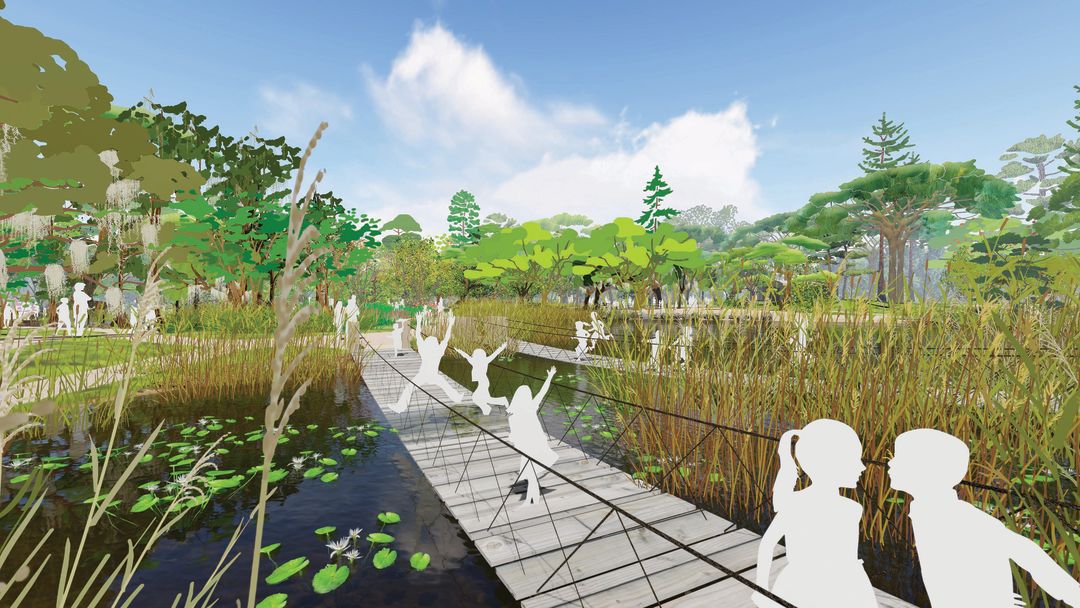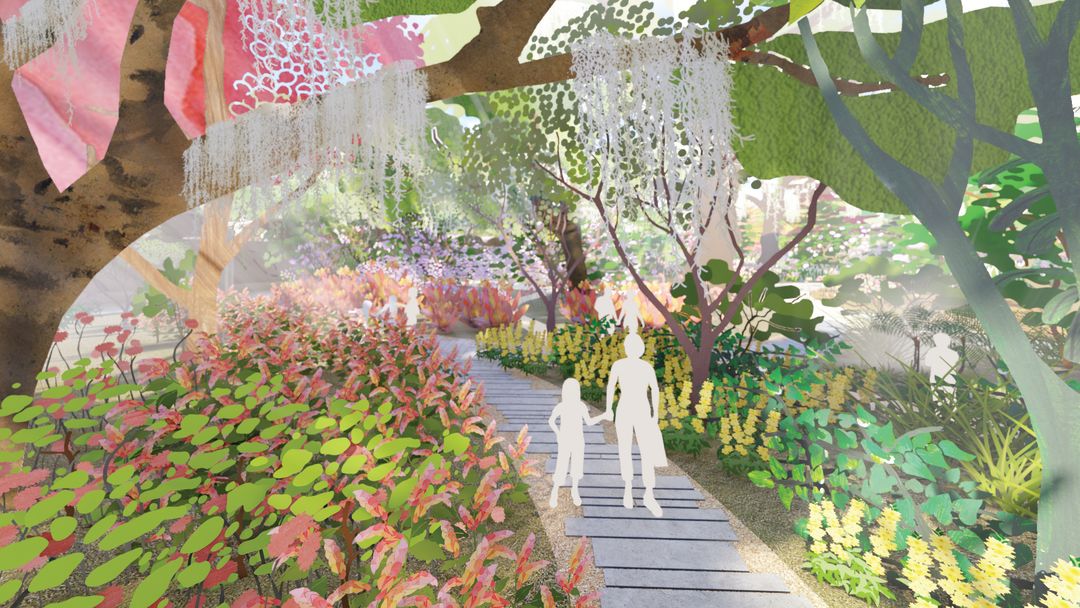4 Things We Know About the Houston Botanic Garden

The city’s first botanic garden—a 120-acre Hobby-area site carved from Glenbrook Park Golf Course—is already taking root, and will be ready for visitors by late 2020. “It’s this wonderful intersection between a beautiful park where you go for serenity combined with the work that museums do related to education and research,” explains Executive Director Claudia Gee Vassar. Below, a sampling of what to expect from Houston Botanic Garden’s first phase:
A plant zoo
Houston’s humid subtropical climate enables the aptly named Global Collection Garden to sample flora from pretty much any climatic zone, from arid to tropical. This allows visitors to zip between plants of Africa and others from Southeast Asia in mere steps, almost as if it’s a plant version of a zoo. “We’re pushing the limits of what we can grow in our region to see if we expand and discover plants that can live here,” Vassar says.
Embracing the bayou
Situated at a natural bend in Sims Bayou, the project will restore a natural wetland environment along a waterfront planted with species native to Houston’s coastal prairies. This both showcases the area’s biodiversity and signals which flora are natural flood fighters. “If every homeowner planted species that act like a sponge,” Vassar says, “it can have a really strong impact.”

A grow-it-yourself approach
HBG partnered with Trees for Houston to reforest portions of the golf course by installing thousands of oaks, pines, and cypresses to mature at an on-site tree farm. The trees will acclimate to the area’s soil and drainage before moving to their final destinations.
Connecting plants to culture
A smorgasbord of edible plants ranging from Asian vegetables to tomatoes, herbs, grapefruits, and olives will be on display to provide a tangible (or taste-able) link between nature and what humans make from it. The idea, Vassar says, is to mirror the fusion flavors so integral to Houston’s dining scene. “You have different plants that are beautiful, and when you put them together in a dish or a garden, that’s even more interesting,” she says.




